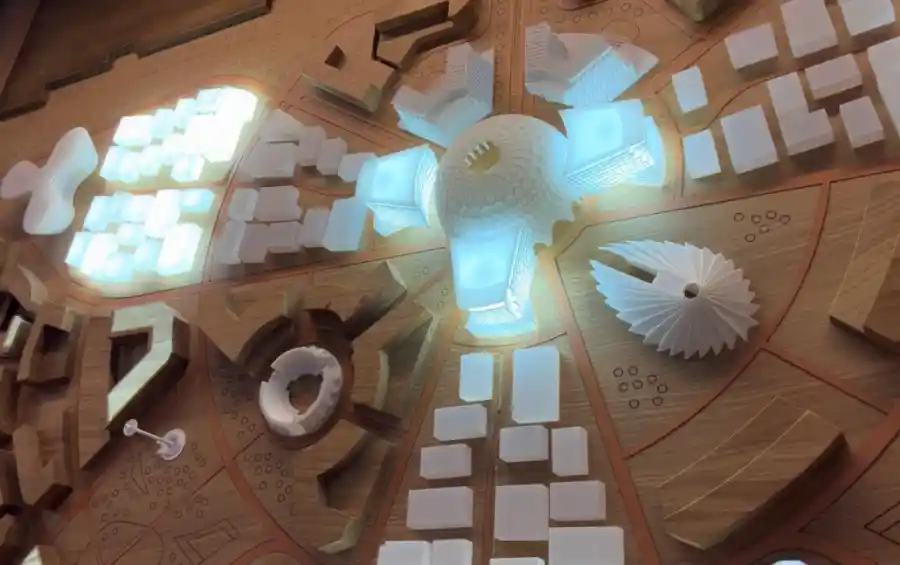2020 World Expo Site Becomes Testing Ground for Future Smart Cities
2020 World Expo in Dubai is over. So what happens next?
From the beginning, the site was planned with key urban planning themes in mind: Reuse, retrofitting, long-term sustainability, and being a ’15-minute city’
Read on to learn how this remarkable group of structures is being turned into a smart city of the future that will benefit the residents of Dubai and attract new investment
Gone are the days when event sites such as the Olympics or the World Expo build structures — both temporary and permanent — without any future planning on what comes next. The world has gotten smaller and has no room for empty stadium relics.
In recent decades, Olympic stadiums have been built better to be retrofitted and downsized to meet the local needs, like 2016 Rio. Since Rio, the Olympic Committee has taken a position to build even less and re-use more. Such was the case with the 2022 Beijing Olympics with five competition venues being reused from the Olympic Games in 2008.
As construction has modernised, our buildings are expected to last longer as well. The idea of retrofitting spaces over time will result in great cost savings and help to meet sustainability efforts. To truly benefit, foresight is key.
The Expo 2020 site is a great example of a mixed-use site built around a core infrastructure with innovative urban planning at every decision point.
Innovative infrastructure at the core of the World Expo 2020
After a 6-month run from Fall 2021 to Spring 2022 (delayed from the Covid pandemic), Expo 2020 saw over 22 million visitors walk through their portal gates. In a historic feat, it was the first time that every country had a pavilion represented — for a total of 191 pavilions.
The expo themes — opportunity, sustainability, and mobility — drove the layout of the 1,000-acre master plan designed by American firm HOK. Each theme had its own petal lined with walkways and plazas all converging towards a large central dome, Al Wasl Plaza.
From above, the harmonious expo site can clearly be seen. With plans to become a smart city, the site was battle-tested with some Expo day’s attendance reaching upwards of 500,000 attendees from around the world. The fair closed its portal gates for the final time in March 2022 and is now transitioning to the next stage — District 2020.
How 2020 World Expo’s site will be reused & retrofitted
District 2020 will reuse the Expo site to become a 3 million square meter development and will include 200,000 sq m of commercial and residential spaces with some Expo buildings remaining in place and at least 80% of the Expo-built infrastructure to be reused. The intent of District 2020 is to focus on global innovation and an integrated community lifecycle, pillars that Dubai has also held true for the past decade of growth.
Terra – the Sustainability Pavilion will become a child and science center, while Alif – The Mobility Pavilion will become an office building. The iconic UAE pavilion shaped like a falcon’s wings will become the country’s cultural center.
The iconic Al Wasl Plaza will remain the central point for the District. Used as performance space for concerts, 3D projection, and more during the Expo, the large dome will be available for many uses to the community.
In addition, two hospitals, a school, 200,000 sq m of office space, and 45,000 sq m of green space will be added, truly making the city a thriving community for everyone.
District 2020, a 15-minute city
If you love urban planning as much as I do, then the concept of a 15-minute city is what we all wish for, but seldom receive in our communities.
A 15-minute city equates to residents of the District having all their needs met within a short walk or bike ride — or rather a 15-minute commute.
To meet the needs of the over 22 million attendees of the Expo, things like pharmacies, restaurants, coffee shops, hotels, intersecting walkways, and more already existed.
A smart city comes to life
To encourage business growth in the region in advancing technologies, the District has an Entrepreneur program for companies to apply and receive two years of free office space as they establish themselves in the region.
Companies like Terminus, which specialises in AI and the Internet of Things, will establish their Middle East headquarters in the District 2020 community. AI-powered robots already raced around the Expo using Terminus technology to entertain kids, transport meals, and answer attendance questions.
The city promises to be seamlessly connected by smart mobility of autonomous vehicles and is positioned well on the city’s new Metro line as well as in close proximity to Dubai’s new airport. To dive deeper into the district’s future plan, visit www.district2020.ae
Smart infrastructure was leveraged from the beginning with strategic partnerships like Siemens. Things like IoT integrated sensors and other smart technologies will be further tested at the site to help provide a blueprint for future smart cities that we may all live in.
The founding vision of the Expo to “create an ecosystem to connect, create, and innovate” will surely live on in this integrated mixed-use community now known as District 2020.
To see some of the coolest design and architecture trends I saw during the final week of Expo 2020, visit my summary here.








